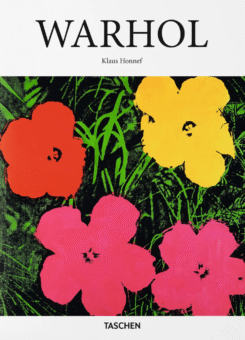Discover the artist who put soup cans in MoMA and movie stars in the Met. This introduction to Andy Warhol presents his prolific and radical oeuvre and its relentless interrogation of consumerism, materialism, and the role of the artist. The title includes more than 100 images of Warhol’s work in top-quality reproductions that retain all of the originals’ pop.Pop StarSoap boxes and celebrities Andy Warhol (1928–1987) is hailed as the most important proponent of the Pop art movement. A critical and creative observer of American society, he explored key themes of consumerism, materialism, media, and celebrity. Drawing on contemporary advertisements, comic strips, consumer products, and Hollywood’s most famous faces, Warhol proposed a radical reevaluation of what constituted artistic subject matter. Through Warhol, a Campbell’s soup can and Coca Cola bottle became as worthy of artistic status as any traditional still life. At the same time, Warhol reconfigured the role of the artist. Famously stating “I want to be a machine,” he systematically reduced the presence of his own authorship, working with mass-production methods and images, as well as dozens of assistants in a studio he dubbed the Factory. This book introduces Warhol’s multifaceted, prolific oeuvre, which revolutionized distinctions between “high” and “low” art and integrated ideas of living, producing, and consuming that remain central questions of modern experience.The authorKlaus Honnef was honorary professor of photography theory at the Kassel Art Academy. He was one of the organizers of documenta 5 and documenta 6 in Kassel, and has been the curator of more than 500 exhibitions in Germany and abroad. He has written numerous books, including TASCHEN’s Contemporary Art, Andy Warhol, and Pop Art.
